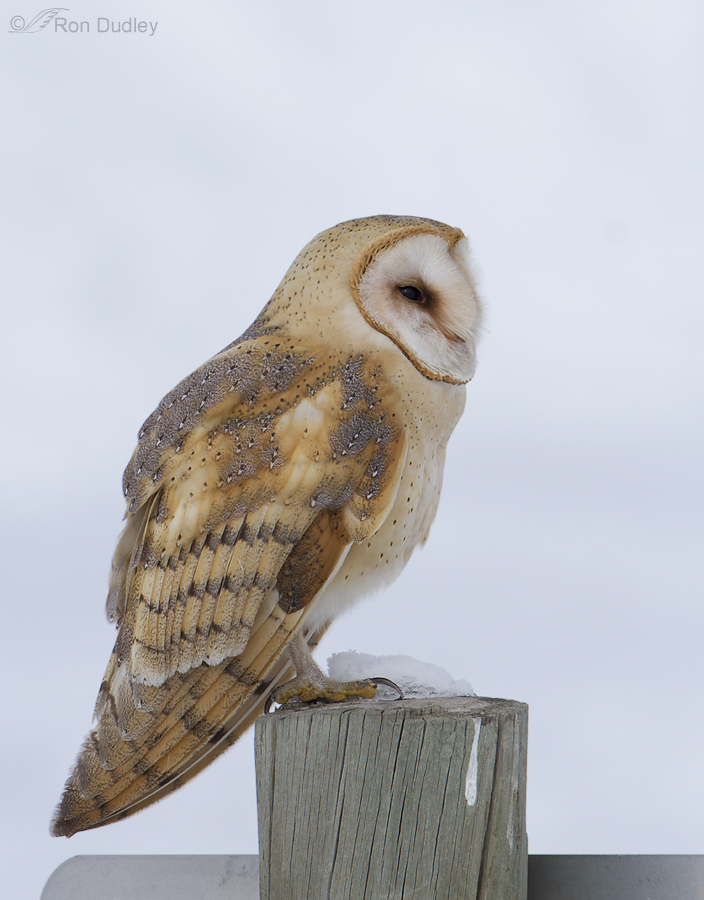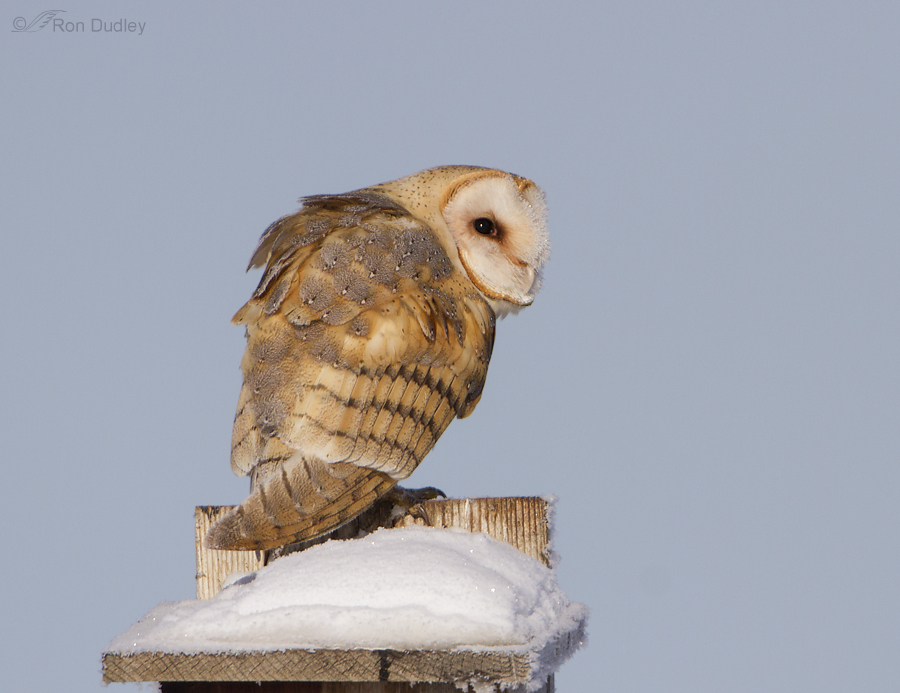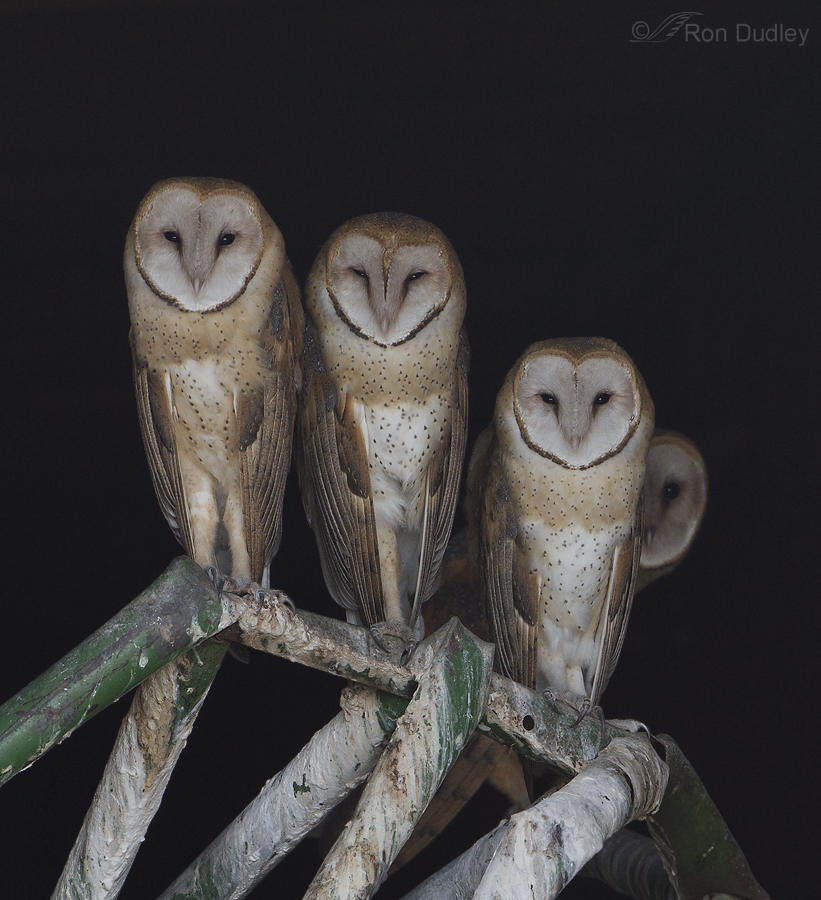It’s been a while since I’ve seen any Barn Owls out and about and I’m thinking they won’t be flying again during daytime until at least next winter so I decided to bid them adieu for the present with one last post for the season.
I generally prefer my avian subjects on natural perches but Ingrid Tayler’s affection for birds on man-made perches in the urban landscape is beginning to instill in me a little more flexibility. Perhaps it isn’t too late for some new tricks from this old dog…

1/2000, f/7.1, ISO 500, 500 f/4, natural light, not baited set up or called in
At Farmington Bay WMA there are numerous signs posted directing hunters to where they can hunt and where they cannot and those signs are favorite resting spots for hunting raptors. When I come across an owl on one of these signs I’ll typically drive on by unless there’s a possibility for take-off shots but I made an exception for this one despite the less than ideal light.

1/2000, f/7.1, ISO 500, 500 f/4, 1.4 tc, natural light, not baited set up or called in
Another favorite perch is this kestrel nesting box at the top of a hill. From this elevated vantage point the birds can hunt visually over a large area without expending the energy required for flight – a significant advantage in the depths of a long, cold winter when calories are at a premium. This owl looks like it might be wary of me and about to fly, but it isn’t. It was calmly scanning the wetlands below and in front of it for voles and would very occasionally look back to check me out.

1/2000, f/7.1, ISO 500, 500 f/4, 1.4 tc, natural light, not baited set up or called in
This perch is perhaps the epitome of “ugly and unnatural” but this family of Barn Owls loved it. It’s a twisted and much used (by the birds) pile of metal inside an old and abandoned tractor-trailer alongside a hay barn on Antelope Island. There are actually five owls within the frame here, two of them behind the foreground bird on the right.
To my eye this image almost looks flashed but (as always) it isn’t. I never use flash on birds, particularly owls. The bright catch lights in the eyes are due to the extreme darkness inside the trailer in contrast to the bright light behind me.
I’ll miss the Barn Owls but I hope the fact that they’re apparently no longer flying and hunting in daylight means those who survived the winter are having an easier time of it now.
Ron


I have really been enjoying your Barn Owl posts – we don’t see very many here in Orange County NY (although we did have one at the Wallkill River NWR for a few weeks this year). I was curious about your comment about the Barn Owls not flying during the day again until next winter…can you explain this behavior to me? Thanks so much, enjoying and being inspired by your amazing blog.
Matthew, Barn Owls seldom hunt during daytime under normal conditions around here. The normally can get plenty to eat at night with their amazing nocturnal hunting adaptations. But when it gets extremely cold during winter (demand for food goes up to keep warm enough) and the ground is covered with a foot of snow (opportunities for food go down, drastically) they have to hunt during daytime to meet their food requirements. When they do so they’re typically very stressed and many don’t survive it.
Although I haven’t done much bird shooting lately, I try to get them perching on branches rather than man-made fencing or structures. It’s just an instinct in me to do this, I suppose. However, I consider urban wildlife photography a genre in its own, and respect it as such. My “conflict” with this probably comes from the fact that I was raised in a very urban environment, so when I began shooting birds, I did not like seeing traces of this “urbanism” in them, I liked to capture them “holy sacred from earth”. So, this meant no fencing, nor even vestiges of them; and when I do shoot one with a fence, I consider it “documentary” in nature, because they are touching “human foundations” with their feet. Isn’t this awful? I know I must also become more flexible in this area too. Good topic Ron!
Your instinct for natural perches is the same as mine, Maria (although I’m very fond of rustic fence posts and barns with old wood, etc). I’m trying to “branch out” a little and I do appreciate some of the other settings but I think I’ll always have that preference.
These perches have, over time, become “natural” for the birds. When the subjects are so beautiful and the photography so splendid, who’s looking at the perch anyhow?
Beautiful stuff.
You’re right, Wally – they’re “natural” for the birds. They provide comfort, safety and convenience too.
I love the last one with the three owls. Very urban looking. The middle one is pretty funny. Looks like he’s looking back at you.
Thank you, Dina.
Looks like the swingset has seen its day.
Great shots.
I think you’re right, Earl. Who knows though, the owls are giving it a fresh paint job so perhaps with a little straightening…